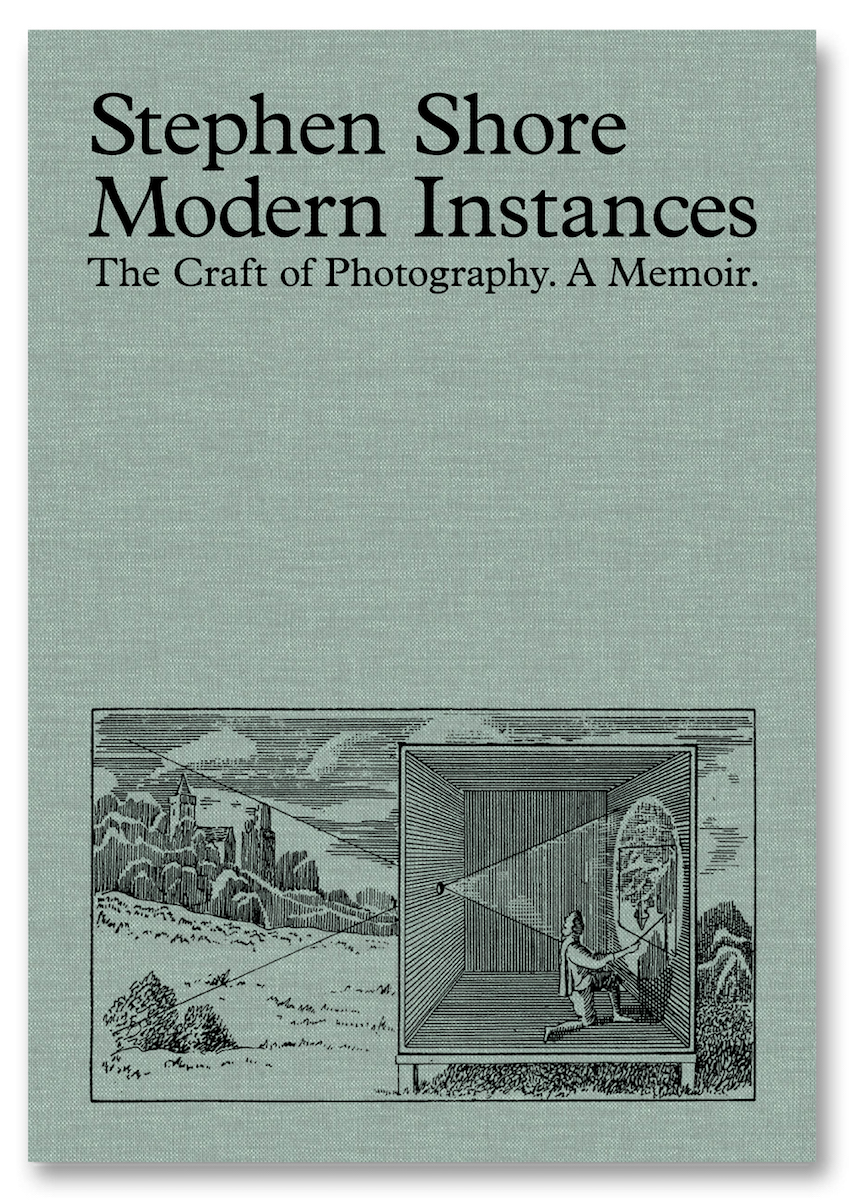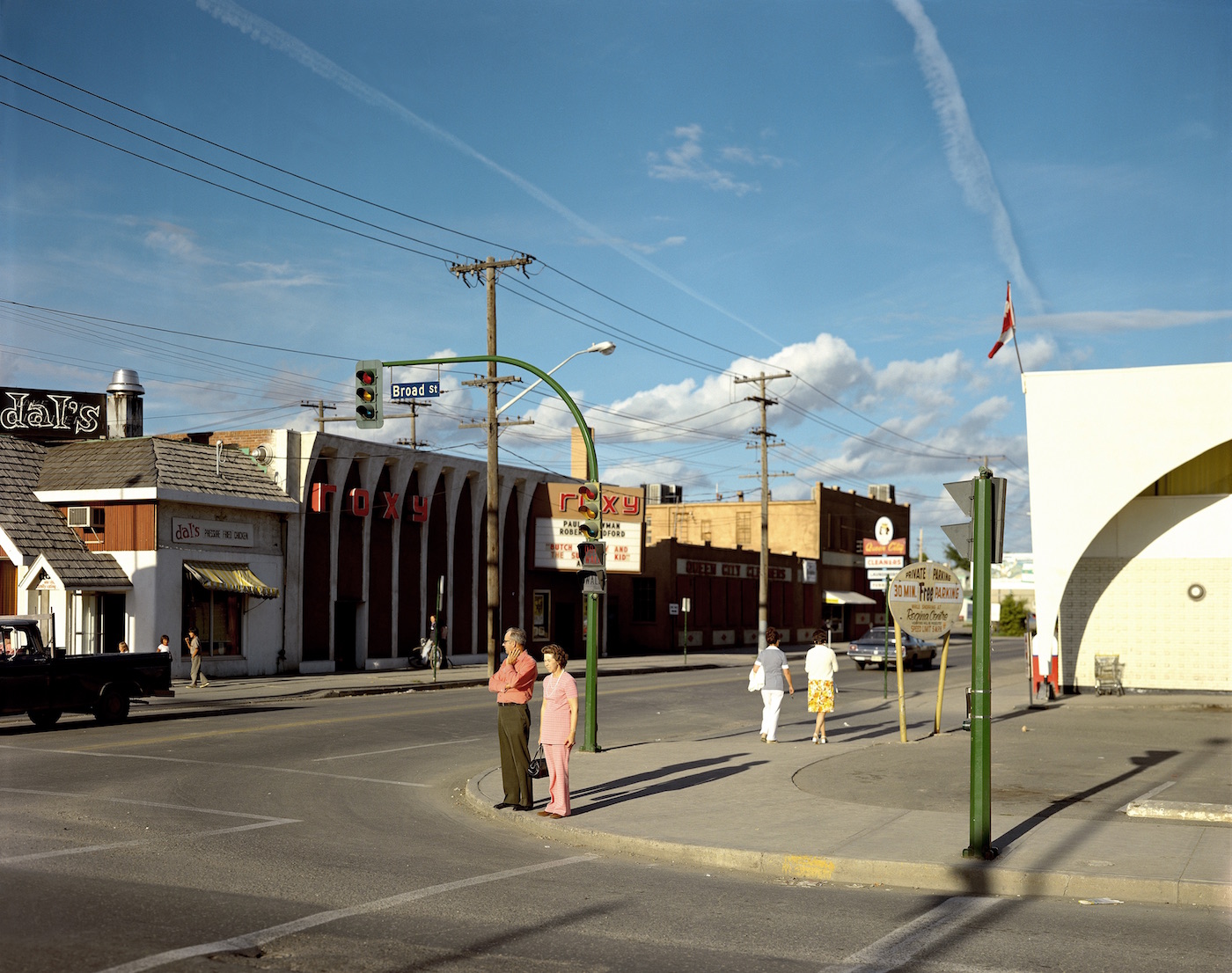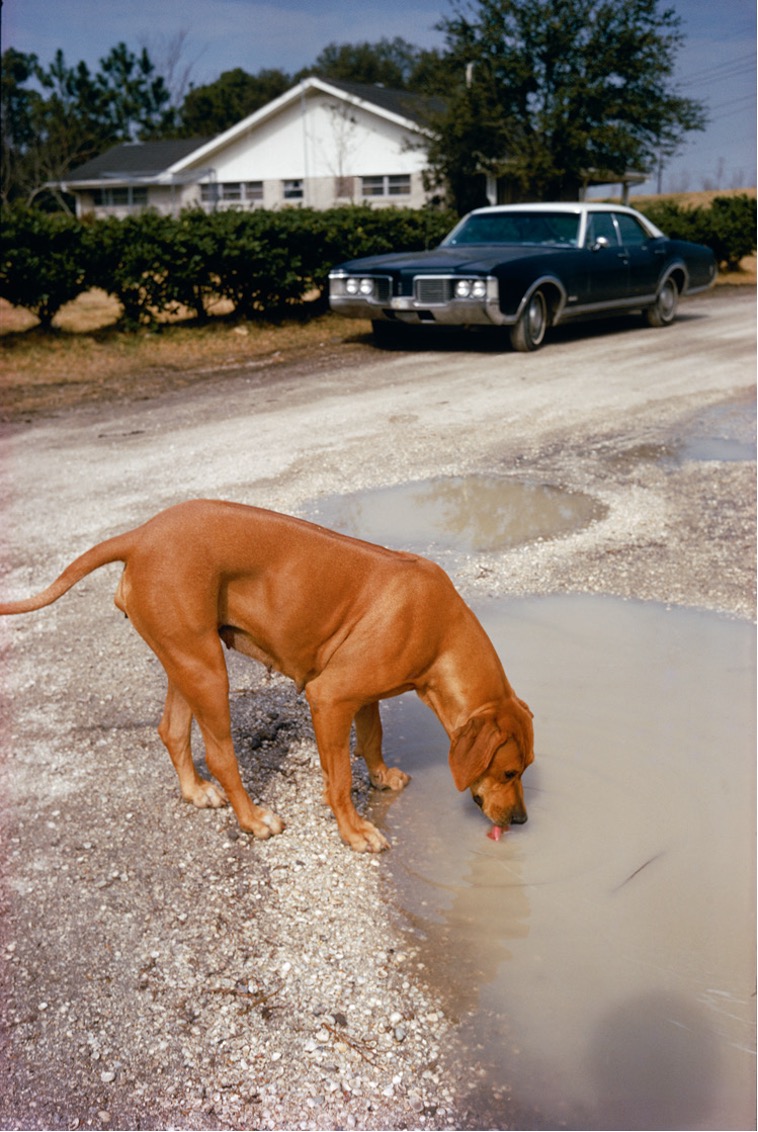
Introduction
In the mid-1990s, I wrote The Nature of Photographs. The theme of the book was that the physical attributes of photography, of its materials, of its equipment, and of prints or digital displays, force the medium to translate the three-dimensional world, flowing in time, into a flat, static, image. It defined the tools at a photographer's hand that determine this translation: the choice of vantage point, the frame, the plane of focus, and the moment and duration of the exposure. Finally, the book describes how these choices affect our mechanisms of perception.

Stephen Shore, Broad Street, Regina, Saskatchewan, August 17, 1974
Where the earlier book was an objective study of a medium and how that medium interfaced with the world, Modern Instances is a subjective scrapbook of thoughts and impressions. An impressionistic memoir. Writing this book has given me the impetus to reflect on the people, events, and works of art that have impacted me and on how those impacts have been assimilated. A number of the most significant photographers of my generation have shown a reticence to articulate their intentions. Robert Adams summed this up in his book Why People Photograph:
Part of the reason that these attempts at explanation fail, I think is that photographers, like all artists, choose their medium because it allows them the most fully truthful expression of their vision... as Robert Frost told a person who asked him what one of his poems meant, "You want me to say it worse?"
Robert Adams was part of a group show in Venice in 1987, in which I participated, along with Lewis Baltz, Bill Eggleston, and John Gossage. Adams didn't make the trip to Italy, but the rest of us took part in public discussion. Baltz and Gossage spoke with their usual eloquence. When it was Eggleston's turn, he said, slowly in his Southern drawl, "I think... I think I'll just show my work and not say anything." As though he might, on another occasion, have much to say. Actually, there was one occasion, more than a decade earlier, that was particularly memorable. The first time Bill showed any of his work in New York was at a talk he gave at the International Center of Photography in 1974. He projected his original Kodachrome transparencies. He didn't say much about his pictures and was unresponsive to most questions from the audience. Then someone asked him, "Could you look at one of your pictures and free associates?" Bill turned and looked at the slide being projected, a picture of a hound lapping at a muddy puddle, and said, "Bridge over troubled water."

William Eggleston, Algiers, Louisiana, ca. 1972
He didn't want to answer questions about his equipment or his images' meanings, but when someone asked him something that he felt was real— well, that interested him. This event must have left a mark on Bill as well, because six years later he named a portfolio Troubled Waters. Not long after that evening, Lee Friedlander showed slides of his American Monument series in the Great Hall at Cooper Union. It was the first time he showed this work. He didn't talk about his pictures and one could tell that the audience, largely students who are used to analyzing their work in class every week, were getting restless. Finally, someone raised their hand and asked, "What were you feeling when you took this picture?" Friedlander replied, "As I recall I was hungry."
Like those students at Cooper Union, I, too, go to class every week. I've been the director of the Photography Program at Bard College since 1982. I see my role in the classroom as that of a guide— leading each student to find their voice as an artist. I see myself as much a teacher as a photographer. When I'm asked to give a public talk about my work, I think about how what I say about my pictures or my life can become a teaching situation. This may grow out of my instinct as a photographer to find the universal in the particular.
I agree with Bob Adams that there are aspects of a photograph that can't be expressed more clearly than the photograph itself and throughout this book, I've let photographs, paintings, and poems speak for themselves, rather than try to "say it worse." But I also know that there's much that can be expressed and digested. This book reflects on the process of internalizing a discipline and the place of that process in the arc of a creative drive.